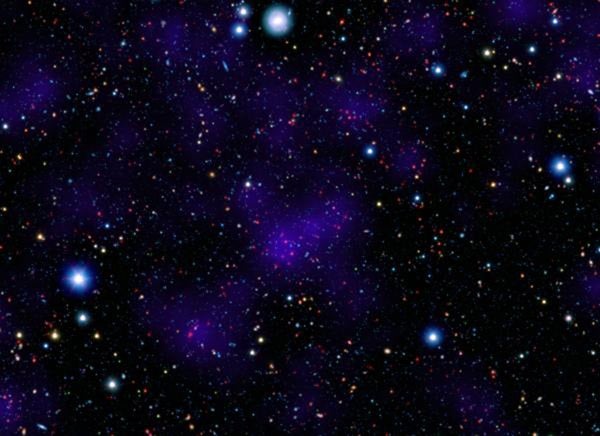A team of astronomers, including Ivelina Momcheva of the Carnegie Observatories in Pasadena, California, has discovered the most distant cluster of galaxies ever found. In a surprising twist, the young cluster born just 2.8 billion years after the Big Bang appears remarkably similar to the much older present-day galaxy clusters.
“We were looking for clusters of galaxies when the universe was still very young,” said Momcheva, who did the spectroscopic analysis that led to the discovery of the cluster. “One might think that the clusters we find would look young as well. However, in this cluster, we found a number of surprisingly ancient-looking galaxies. This cluster resembles modern-day clusters, which are nearly 10 billion years older.”
“It is like we dug an archeological site in Rome and found pieces of modern Rome in amongst the ruins,” said Casey Papovich of Texas A&M University.
Cluster CLG J02182-05102 contains approximately 60 galaxies, including several enormous red galaxies at its center, holding 10 times as many stars as the Milky Way. Such galaxies were thought to be rare in the universe at this early stage. Similar galaxy clusters today have had billions of more years to develop and grow.
The cluster was first detected using NASA’s Spitzer Space Telescope, which is sensitive to the infrared light emitted by the galaxies. The researchers observed the high density of galaxies within CLG J02182-05102, but they could not determine from the Spitzer data whether its galaxies are indeed gravitationally bound, as is the case with true galaxy clusters. For these measurements, they used an advanced spectrograph on the Carnegie Institution’s Magellan/Baade 6.5-meter telescope at the Las Campanas Observatory in Chile. Analyzing the faint light from seven galaxies near the center of the cluster, they found that the galaxies had an average redshift of 1.62. “This means that we are seeing it the way it looked 9.6 billion years ago,” said Momcheva. “Since then, it has moved away from us as the universe has expanded. Today, the distance to the cluster is 15 billion light-years.”
Galaxy clusters are the largest gravitationally bound structures in the universe, and studying the new discovery will help researchers understand how galaxies evolve and form clusters. CLG J02182-05102’s large red galaxies are unexpected because most galaxies at that time were still rapidly forming stars, and, as a result, appear smaller and their emitted light bluer.
For the galaxies in ClG J02182-05102 to have become chock full of old red stars so quickly compared to their contemporaries, these galaxies must have “lived fast and died young,” Papovich said.
“We are witnessing the youth of a truly massive cluster of galaxies,” said Momcheva. “ClG J02182-05102 will continue growing, accreting more galaxies, and slowly aging. By the present day, it has probably grown to be a large metropolis of a cluster like our neighbor, the Coma cluster.”










